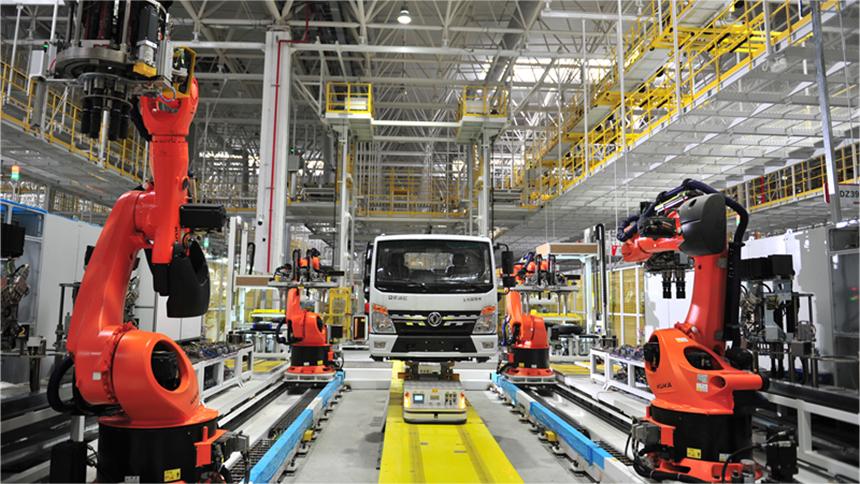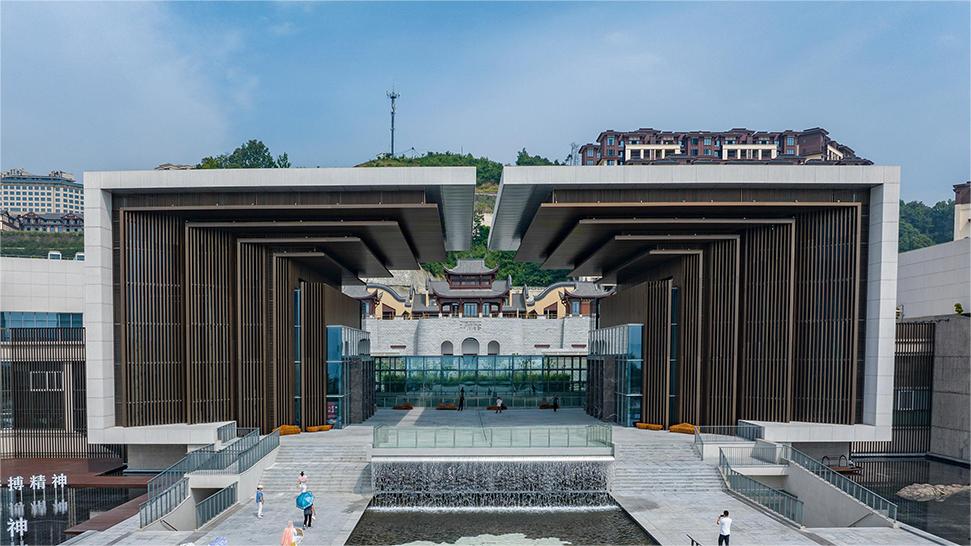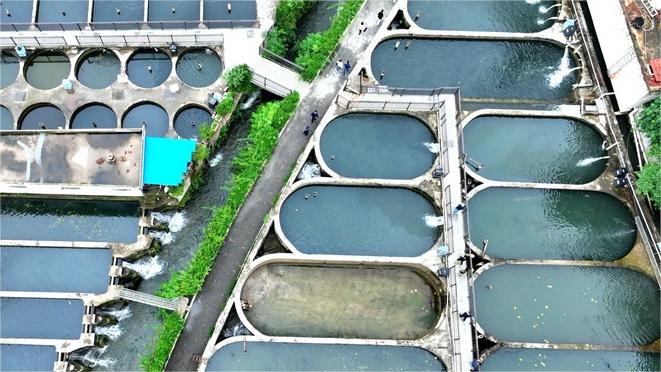Guochao injects vitality into tourism, cultural consumption
Guochao, also known as "China-chic," a fashion trend featuring modern designs mixed with traditional cultural elements, has become a highlight of China's tourism market.
From cultural and creative products to novel and interesting cultural experiences, various regions in the country are offering richer and more diverse cultural and tourism experiences by keeping up with the upgrading of cultural and tourism consumption demand, utilizing traditional cultural resources, and integrating modern technologies.
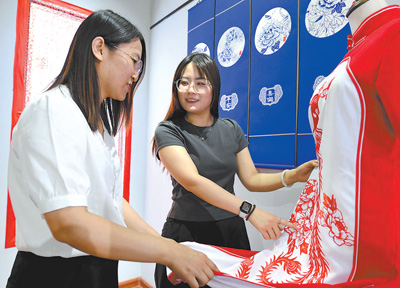
Visitors watch a qipao dress featuring paper-cutting elements at a studio in Fucheng county, Hengshui city, north China's Hebei Province. (Xinhua/Wang Xiao)
This is inseparable from the increasing number of tourist attractions known for traditional culture. Records from the Ministry of Culture and Tourism (MCT) show that the number of traditional cultural attractions in China increased from 2,064 in 2012 to more than 4,000 in 2023, with an average annual growth of 8 percent.
Cultural attractions like the Archaeological Ruins of Liangzhu City in east China's Zhejiang Province and the Sanxingdui Ruins in southwest China's Sichuan Province have attracted throngs of tourists, while national cultural parks for the Great Wall and the Beijing-Hangzhou Grand Canal have become popular tourist destinations.
The National Archaeological Site Park of Sui-Tang Luoyang City in Luoyang, central China's Henan Province is filled with tourists wearing Hanfu, a type of traditional Chinese garment. The city has witnessed a surge in bookings for Hanfu-themed hotels. Records from China's service-focused e-commerce giant Meituan suggest that since the beginning of this year, the number of hotels offering Hanfu-themed products has soared 120 percent compared to the same period last year, with bookings skyrocketing by 300 percent.
The wide application of technologies such as cloud computing, virtual reality (VR), and augmented reality (AR) has resulted in more new cultural and tourism products themed on Guochao.
At a 5G-powered immersive experience zone of the China Grand Canal Museum in Yangzhou city, east China's Jiangsu Province, visitors can take virtual tours of 17 cities along the Grand Canal.
At the Datang Everbright City, a tourist landmark featuring a grand street with characteristics of the Tang Dynasty (618-907) in Xi'an, capital of northwest China's Shaanxi Province, tourists can immerse themselves in the splendor of the dynasty.
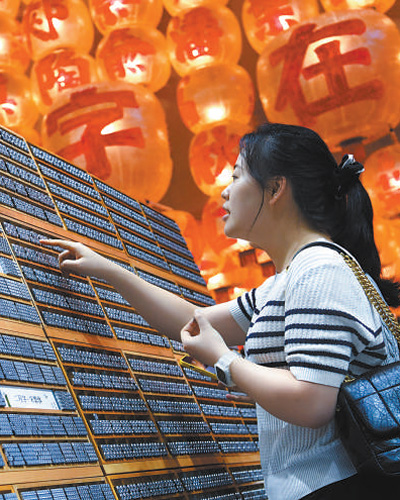
A tourist selects cultural and creative products at the 20th China (Shenzhen) International Cultural Industries Fair in Shenzhen, south China's Guangdong Province. (Xinhua/Liang Xu)
In early 2024, the MCT, together with the National Development and Reform Commission and the Ministry of Industry and Information Technology, announced 42 national immersive and smart tourism spaces, which use technologies like AR, VR, and artificial intelligence to create interactive experiences for tourists.
By combining digital elements with cultural and creative features at destinations like tourist attractions, resorts, museums, and heritage sites, these smart tourism spaces deeply engage tourists and allow them to interact with these blended virtual and real environments, and feel the splendor of traditional culture.
The immersive cultural and tourism experiences featuring Guochao elements have injected fresh impetus into the development of the cultural and tourism market. Consumption at the 42 national immersive and smart tourism spaces are estimated to have exceeded 220 million yuan ($30.96 million) during this year's five-day May Day holiday.
Cultural and tourism products themed on Guochao need to rely on both traditional culture and innovation through the application of new technologies, said Zhai Xiangkun, deputy director of the cultural and tourism policy research center at China University of Labor Relations.
Cultural and creative products featuring Guochao elements still have great potential, as people are paying more attention to spiritual and cultural needs, Zhai added, suggesting that more differentiated, unique and quality supply be introduced.
During the Cultural and Creative Week of the 2024 Beijing Museum Month which recently ended at the National Natural History Museum of China (NNHMC) in Beijing, six fairs for cultural and creative products were held at museums, including the NNHMC.
In recent years, Beijing has rolled out policies and set up platforms to encourage the development of cultural and creative products by museums, according to an official from the Beijing Municipal Cultural Heritage Bureau. Last year, revenue generated from cultural and creative products from various museums in Beijing surpassed 200 million yuan.
Experts suggest developing more distinctive and chic cultural and creative products featuring Guochao elements and allowing traditional culture to inject fresh momentum into the high-quality development of the tourism industry.
Photos
Related Stories
Copyright © 2024 People's Daily Online. All Rights Reserved.






